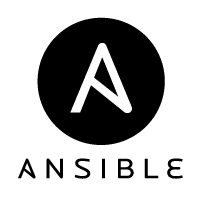Category: Tutorials
The Liquid Web knowledgebase provides information on thousands of topics surrounding every aspect of hosting, Linux, Windows, and countless other article types that help boost your Liquid Web experience!
As of November 9, 2018, the WP GDPR Compliance plugin has been exploited by hackers. This plugin aids e-commerce site owners in compliance with European privacy standards. Since the very nature of GDPR is to protect the personal data and privacy of EU citizens, it should be tended to as soon as possible to avoid a costly cleanup. WP GDPR Compliance is also known for working in conjunction with many forms including Contact Form 7, Gravity Forms, and WordPress Comments.
Install PHP on Windows
PHP for Windows provides users the ability to run nearly any PHP script desirable. Windows can tackle a wide range of software, from your PHP scripts to the many content management systems such as WordPress or Drupal.
How to Use Ansible

Ansible is an easy-to-use automation software that can update a server, configure tasks, manage daily server functions and deploys jobs as needed on a schedule of your choosing. It is usually administered from a single location or control server and uses SSH to connect to the remote servers. Because it employs SSH to connect, it is very secure and, there is no software to install on the servers being managed. It can be run from your desktop, laptop or other platforms to assist with automating the tedious tasks which every server owner faces.
Setup a Development Environment for CentOS using cPanel
Editing a website's code is often needed to update a site, but doing this to the live website could create downtime and other unwanted effects. Instead, it's ideal to create an environment especially for developing new ideas. In this tutorial, we will explore creating a development site specifically for CentOS servers.
Configure NGINX to Read PHP on Ubuntu 16.04
What is NGINX?
NGINX is an open source Linux web server that accelerates content while using low resources. NGINX provides:
Useful Command Line for Linux Admins
The command line terminal, or shell on your Linux server, is a potent tool for deciphering activity on the server, performing operations, or making system changes. But with several thousand executable binaries installed by default, what tools are useful, and how should you use them safely?
Often we want to edit our domain’s code, but on a production website, this can be dangerous. Making changes to the production site would not only allow all of the Internet to see unfinished changes but could also cause errors to display. As a workaround, we’ll create a testing domain or “dev” domain to work out any bugs and changes to the site.
Kubernetes 101: A How To Tutorial
What is Kubernetes?
The name Kubernetes has its origins from the original Greek term for helmsman or pilot. Kubernetes, or ‘k8s’ (pronounced “Kate’s”) as it’s sometimes referred to, is an open-source software tool that was originally created by Google and is now being maintained by the Cloud Native Computing Foundation. Kubernetes is used for arranging and coordinating containers that an application needs to run into easy to handle groups.
How To Install Docker on Ubuntu 16.04

Docker is an open-source software tool designed to automate and ease the process of creating, packaging, and deploying applications using an environment called a container. The use of Linux containers to deploy applications is called containerization. A Container allows us to package an application with all the parts needed to run an application (code, system tools, logs, libraries, configuration settings, and other dependencies) and sends it out as a single standalone package deployable via Ubuntu (in this case 16.04 LTS). Docker can be installed on other platforms as well. Currently, the Docker software is maintained by the Docker community and Docker Inc. Check out the official documentation to find more specifics on Docker. Docker Terms and Concepts.
SQL Databases Migration with Command Line
What if you have dozens of SQL databases and manually backing up/restoring each database is too time-consuming for your project? No problem! We can script out a method that will export and import all databases at once without needing manual intervention. For help with transferring SQL Logins and Stored Procedures & Views take a look at our MSSQL Migration with SSMS article.
Our Sales and Support teams are available 24 hours by phone or e-mail to assist.

